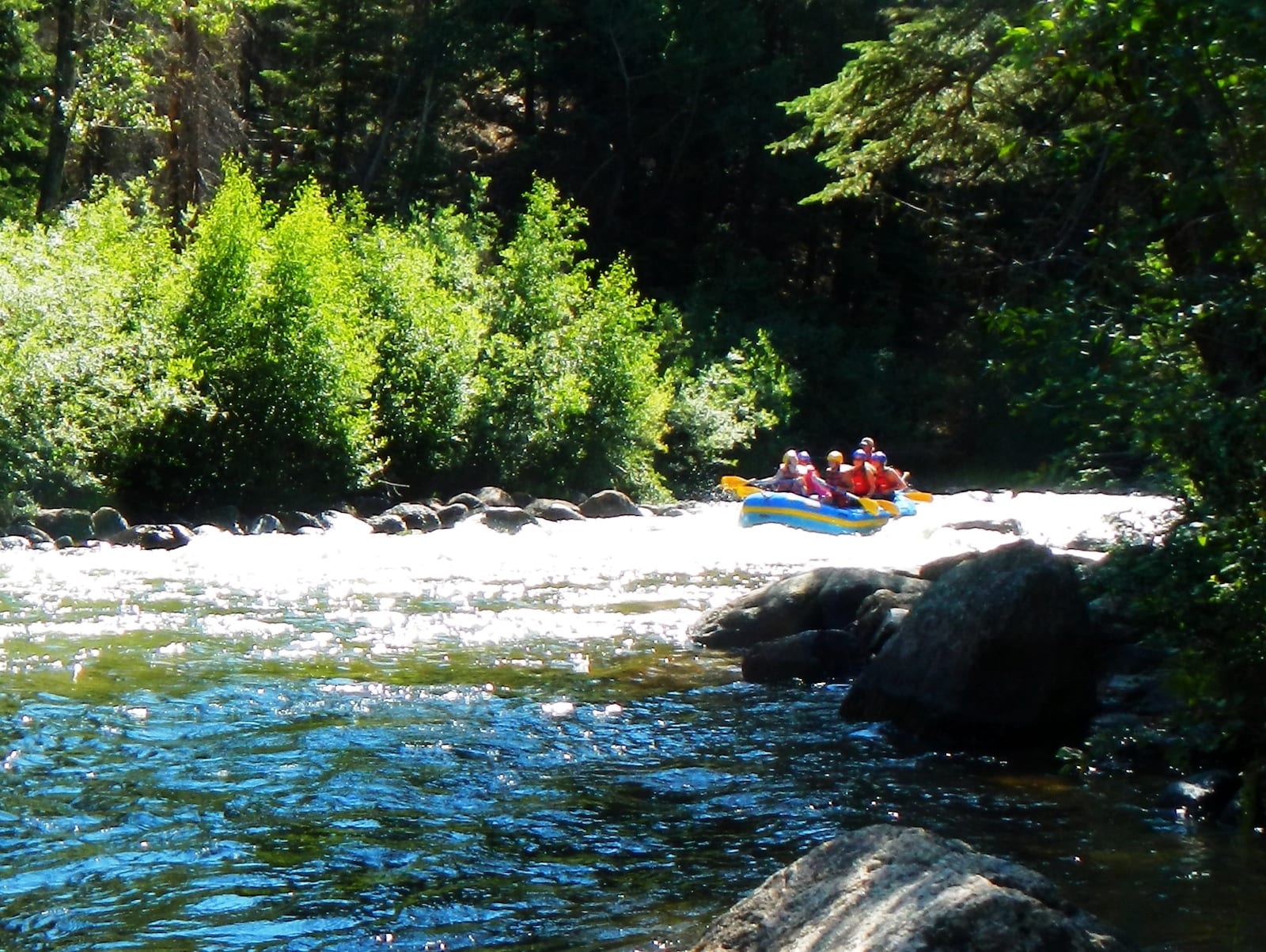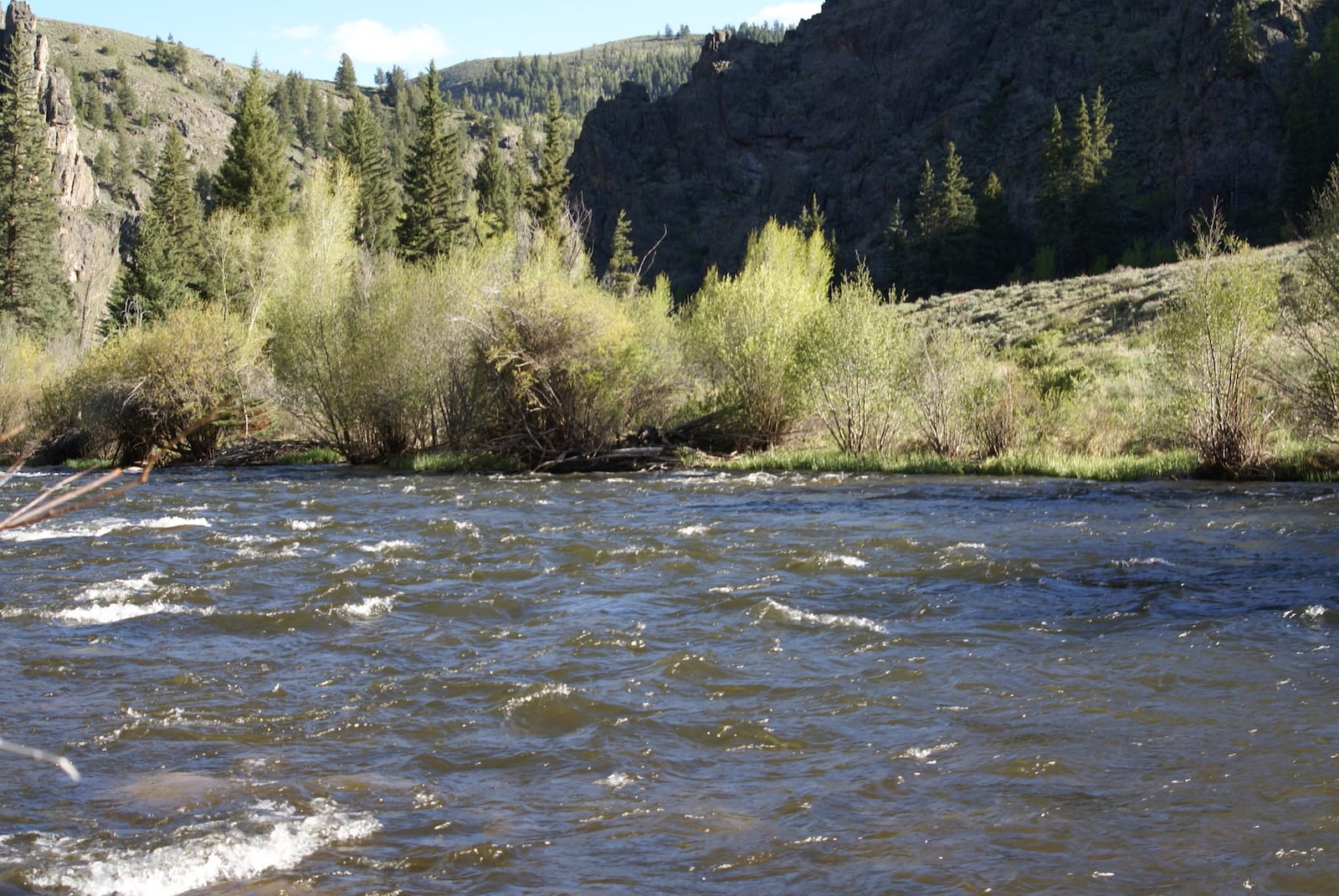In Gunnison County, Colorado, the Taylor River offers an exciting chance for whitewater rafting in breathtaking scenery. The river is mostly contained in the Gunnison National Forest and features predominantly Class II and Class III rapids.
The Taylor River begins near the continental divide, and flows into the Taylor Park Reservoir. South of the dam, the river leads into the Gunnison River, which is a tributary of the Colorado River. The controlled flow from the Taylor Park Dam usually allows for great whitewater rafting conditions from May all the way until September.

Rafting Trips on the Taylor River near Gunnison
The Taylor River is often overlooked by the Arkansas River when most people are planning to enjoy some Colorado whitewater. However, there are many great opportunities available on the Taylor River for quarter, half, and full day rafting trips.
Whitewater Rafting Difficulty: Beginner, intermediate, and advanced riders can find great sections of the Taylor River suited to their individual skill level. Although the river primarily consists of Class I, II, and III sections, there are a few areas with technical Class IV rapids.
It should also be noted that the Taylor River is prone to having many pieces of wood floating in the water. This is potentially hazardous, so rafters should remain aware and engaged while floating.

Below the Taylor Park Dam, here are the sections of the Taylor River for whitewater rafting:
Upper Taylor
The Upper Taylor is the most popular section of the Taylor River and is full of fun, Class III rapids. Most commercial operators run on the 5 mile section between Initiation put-in and the South Bank take-out.
Alternatively, rafters can begin their trips in a few spots further north to extend the journey. From the New Generation put-in just above Initiation, rafters can hit Todd’s Slot, which is the river’s largest drop, and a dangerous Class IV rapid.
Furthermore, if you begin your journey at the put-in south of the Lottis Creek Campground, you can enjoy the day on a 12 mile run. The extended section ranges between Class II and Class IV rapids and becomes more challenging at levels above 1000cfs.
Middle Taylor
The Middle Taylor is Taylor River’s least popular section for whitewater rafting, largely in part due to the abundance of private property. Instead, the section is primarily used by fishermen, or tacked on to the end of Upper Taylor trips.
The Middle Taylor begins at the South Bank (where the Upper Taylor ends), and flows for about for 2.5 miles until the Five-Mile Bridge. The section has primarily Class II and III rapids.
Lower Taylor
Finally, the Lower Taylor is another great section for beginners or families. Starting at Five-Mile Bridge, the Lower Taylor extends all the way to Almont, where the Taylor River meets the East River. The section offers stunning views of the towering canyon walls along Class I and Class II rapids. Overall, the Lower Taylor is a relaxed, but fun float.

Taylor River Rafting Guides
Activities near the Taylor River
In addition to whitewater rafting, the Taylor River is also a very popular destination for fly fishing. While out catching trout, it is very common for anglers to encounter beaver dams and wildlife in the scenic Gunnison National Forest.
From State Highway 135 north of Gunnison, motorists can drive through the Taylor Canyon on County Road 742. The scenic route leads to the Taylor Park Reservoir and Dam, with ample camping opportunities along the way. At the reservoir, there is a marina which serves meals and provides boat and fishing gear rentals.
Read about camping near Almont and Taylor Park Reservoir.
Details
Nearby Towns (following river north to south):
Season: Mid-May to September
Class: II – III
Details
Nearby Towns:
Season: Summer
Class: II-III
[sc name=”Ad-Activity-Bottom”]

